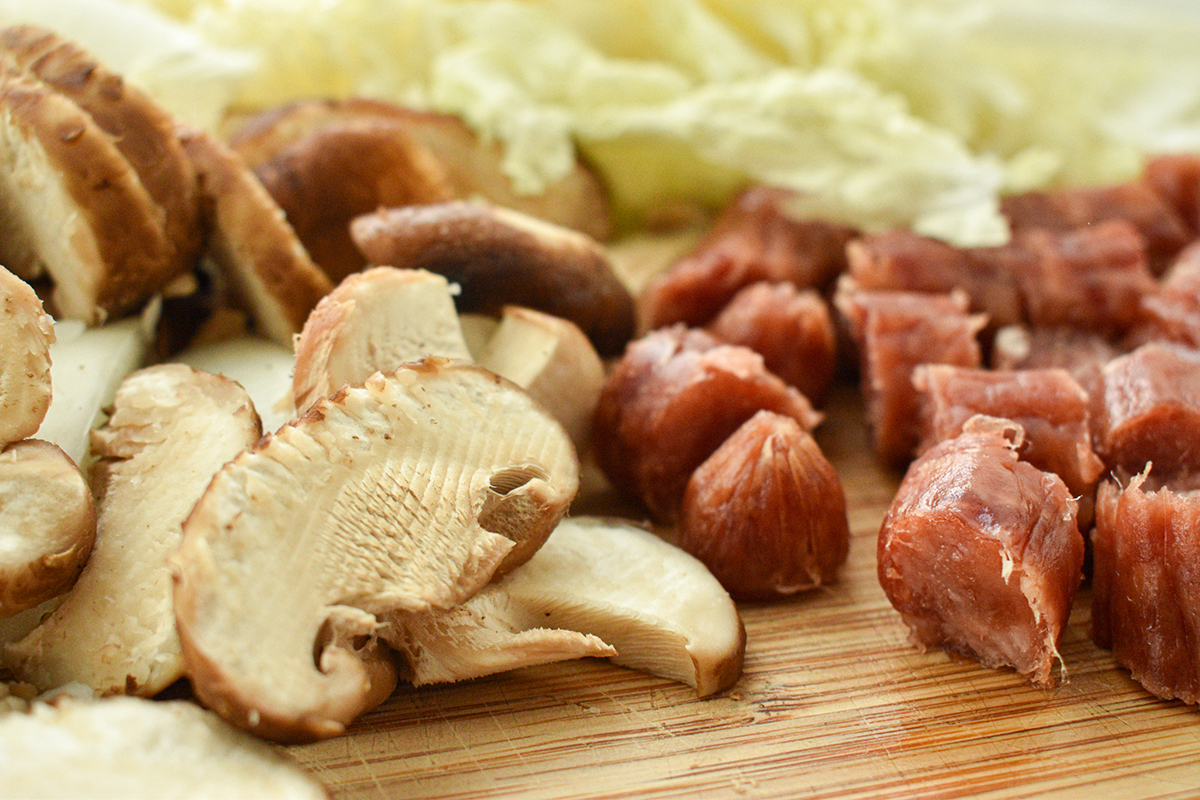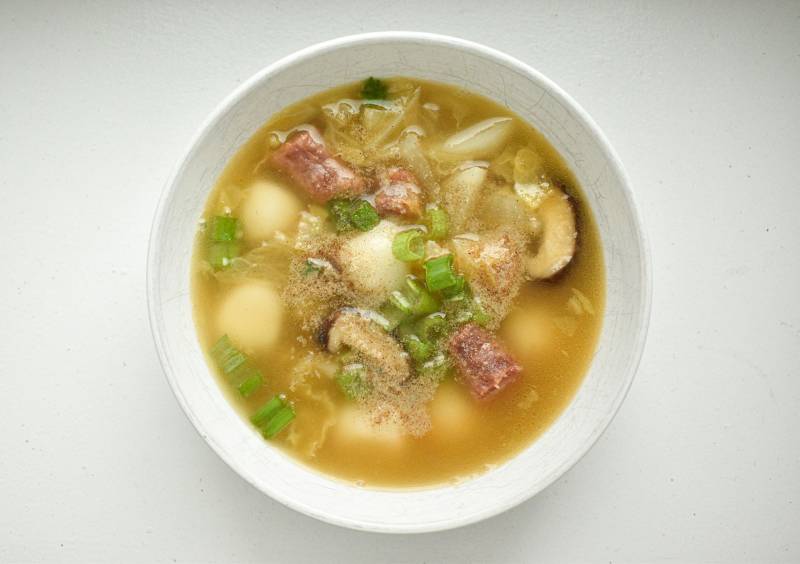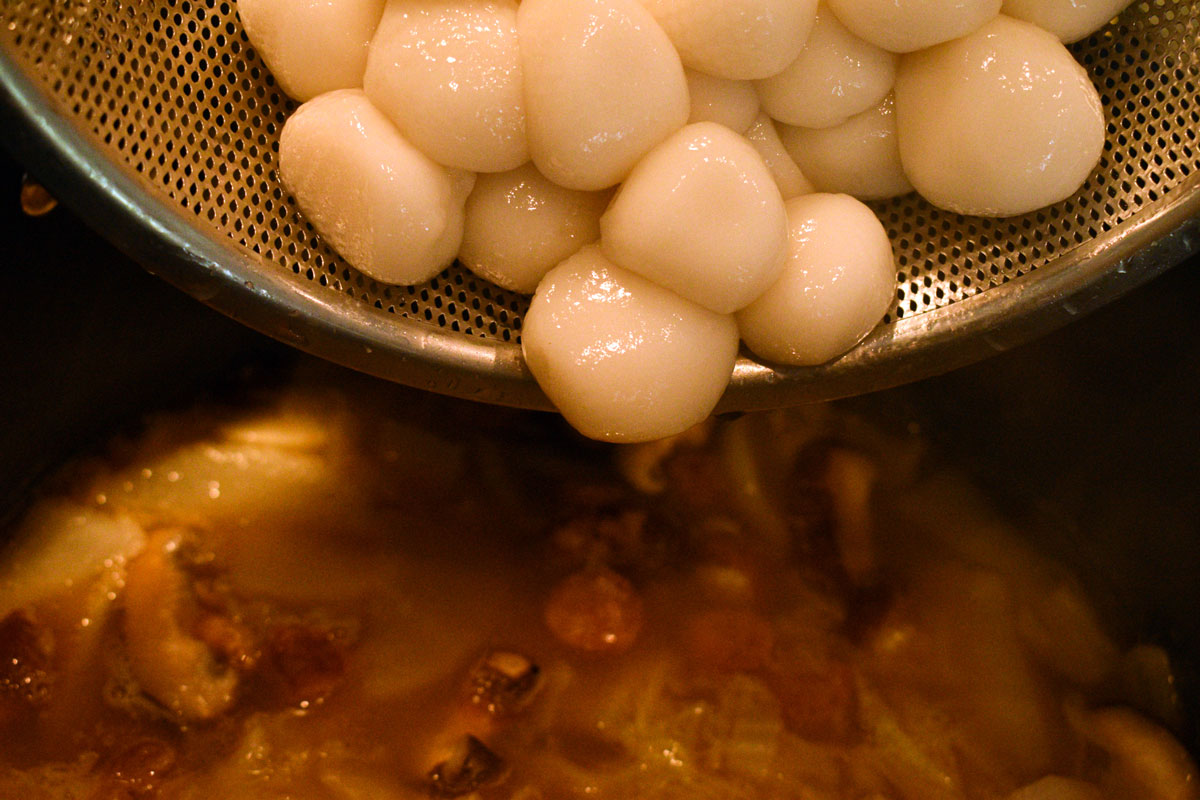Every December, my family and I drive into San Francisco’s Chinatown for our annual winter solstice dinner. My paternal grandmother, decked out in a red fleece jacket and beanie, leads us to New Woey Loy Goey, a dimly lit restaurant beneath Jackson Street only accessible by staircase. In the dead of winter, the restaurant is remarkably warm inside, and tables are occupied by locals ordering the daily seafood special from the fish tank. Seated around a corner table, our family knows a bowl of chewy tang yuan atop peppery broth will complete the night.
Those familiar with tang yuan may picture glutinous balls shaped like miniature snowballs in sweet soup. The sweet tooth in me indulges in these black-sesame and peanut-filled balls whenever I have the chance. But my heart truly belongs to the salty tang yuan soup served on Dec. 21 in commemoration of Dong Zhi (冬至), known as winter solstice.
When I’m home for the holidays, I slurp up an embarrassing number of bowls, rich in shrimp and chicken flavor and served with shiitake mushrooms, crunchy cabbage and savory lap cheong, or Chinese sausage. The broth, steamy and thick from hours of boiling, clings to the tang yuan in my soup spoon, forming the perfect bite. A dinner with tang yuan soup is a not-to-miss occasion, and I, along with the rest of my family, would drop any obligation in a heartbeat to eat at.
This year, I wonder how my family, now miles apart, will celebrate Dong Zhi. When in person, our family can visit Chinatown or gather in our grandmothers’ kitchens to taste their own versions of tang yuan. At the thought of missing such an important celebration, I realize I have so many questions about this holiday and my family traditions, specifically: How can I mimic my grandmothers’ soup recipes? So I reach out.
The first response comes from my father’s mother, who sends me a trove of voice recordings and pictures of her tang yuan soup through WeChat, our primary communication platform these days. In her recordings, she orders me to boil the chicken bones and skim the fat from the broth, and to absolutely not forget the white pepper garnish. Photos of her tang yuan, blurred into indistinguishable pixels by her shaky hands, make me chuckle at our generational divide.

The second message comes from my mother’s mother, who dictates her recipe to my mother as she supervises her cooking in our tiny kitchen. My mother then translates the recipe from Taishanese to English into digestible steps and forwards me the directions via email. I marvel over how every step of her recipe is straightforward and precise—slice the mushrooms ¼ inch, roll dough balls into banana-shaped logs for easy cutting, boil the broth for 15 minutes—and how these instructions must travel through two brains in order to reach my own.

